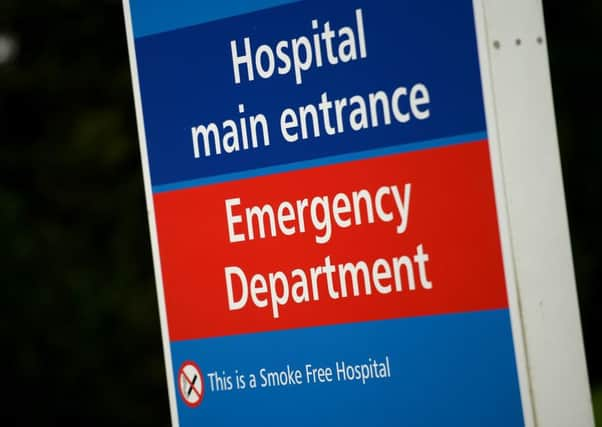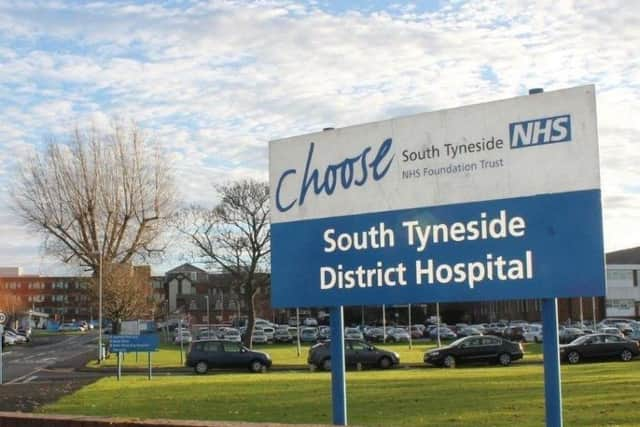Thousands waited more than four hours in South Tyneside A&E last year


The trust’s major A&E department has not quite met the NHS national standard for waiting times in A&E.
The NHS target is for 95% of people visiting A&E to be discharged, transferred or admitted to a ward within four hours of arriving.


At the South Tyneside Trust that figure was 94%.
Advertisement
Hide AdAdvertisement
Hide AdThe 2017-18 report shows that the trust’s major A&E department saw the equivalent of 168 people a day last year.
Around 61,500 people went to A&E, up from 60,300 the previous year.
Of these, 3,904 waited for more than four hours, from arriving in A&E to being discharged, transferred or admitted to a ward.
Dr Chris Moulton, vice president of the Royal College of Emergency Medicine, said that the pressure on A&E has “spiralled out of control”.
Advertisement
Hide AdAdvertisement
Hide Ad“If you keep stretching an elastic band, eventually it will snap,” he said. “You don’t ask ‘why did the elastic band snap’ – it snapped because you stretched it.”
He said that A&E departments were struggling to cope with the demands of a growing and ageing population, particularly since a lack of social care beds keeps elderly patients waiting in A&E.
He said that the more “badly stretched and understaffed” departments were, the more difficult it is to recruit junior doctors, creating a “vicious circle” of staff shortages.
Dr Moulton still supports the 95% target, saying that it’s a “good pressure” on emergency departments to keep as few patients waiting as possible.
Advertisement
Hide AdAdvertisement
Hide AdDr Sean Fenwick, director of operations at South Tyneside and City Hospitals Sunderland NHS Foundation Trusts, said: “Like the rest of the NHS, we continue to see unprecedented demand for our emergency care services. This pressure is now all year round and means the NHS is now successfully treating more patients than ever before within four hours. In South Tyneside, we saw around 5,500 attendances during August which is around the same amount of patients we saw during August 2017, with the vast majority of patients seen within four hours.
“Our teams are working exceptionally hard, day-in, day-out, to ensure safe, high quality care for every patient who needs emergency treatment and, despite this relentless increase in activity, we continue to see around nine out of every ten people within four hours of their arrival which is testament to the exceptional skill, dedication and commitment of our amazing frontline staff.
“It is vital as part of our Path to Excellence programme that we continue to work together across the whole local health economy to ensure emergency care services are kept free for those with the most serious emergencies and that we build future services which provide the best possible care and outcomes for the growing number and complexity of patients who need emergency hospital-based care.”
According to Dr Moulton, the solution is simple – more acute hospital beds, increased capacity in social care, and the staff and facilities to keep those beds open.
Advertisement
Hide AdAdvertisement
Hide AdHe said: “It’s not a magic formula. It’s a blindingly obvious solution.”
Independent health charity the King’s Fund said that A&E performance is a “barometer for the overall performance of the health and care system”.
Senior analyst Deborah Ward said: “A&E performance is influenced by activity and pressure in other services, affecting both the number of people going to A&E, and how quickly A&E can treat them.
“Some of the pressure comes from within A&E departments,” she said. “Staff shortages are particularly concerning, and many have a lack of physical space. Some departments see twice as many patients as they were built for.”
Advertisement
Hide AdAdvertisement
Hide Ad“However, it isn’t relentlessly bad news,” she added. “A&E waiting times, whilst longer than we would like, are about average when compared to similar countries, and patient satisfaction is holding up.